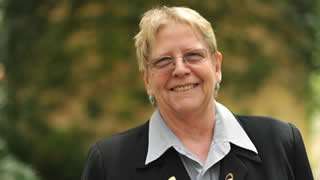Technology makes the world go round but how do we ensure that Australia is equipped to prosper in this digital age?
Teaching kids to code isn’t going to be enough to address the challenges of a shrinking talent pool.
Teaching coding and computational thinking in schools undoubtedly empowers the next generation to leverage technology more effectively in every field of endeavour.
However, efforts to build a strong foundation in problem solving and programming need to be supported by homing in on another opportunity, one traditionally overlooked.
ICT today is stereotypically a young man’s game. With one or two exceptions, our sector displays a glaring lack of diversity in gender, age and, in some cases, ethnicity.
Simply by addressing the inequity of representation by women, mature workers, some ethnic groups and people with disabilities, we could not only add thousands of skilled professionals to the mix but also improve workforce effectiveness.
A global study by Forbes of the diversity practices of 321 senior executives and board members working for large multinational corporations found that diversity:
- Is a key driver of innovation and creativity.
- Improves understanding of, and penetration into, different markets.
- Helps to attract top talent.
- Is crucial for success on a global scale.
Our failure to value diversity in ICT leads to a loss in productivity and creativity. When any sector is peopled primarily by a homogeneous group, the breadth and quality of innovative thinking is naturally constrained, as are the opportunities for those who fall outside the norm.
For female ICT professionals, who comprise less than 20 per cent of their discipline, work-life balance issues, pay disparities, access to professional development and cultural issues were all cited as barriers to participation in a 2010 study by the Association of Professional Engineers, Scientists and Managers Australia.
So we find a situation where female participation rates fall significantly in later years because of the challenges for women seeking to return to full-time work after child-rearing in the course of a dynamic and competitive ICT career.
While the issues for experienced workers are very real, the diversity problem manifests much earlier, with women and other minority groups significantly under-represented in ICT courses at university.
According to the latest data from Graduate Careers Australia, men accounted for just more than 80 per cent of all computer science graduates last year and the figure was even higher (85.3 per cent) for graduates aged under 25.
Not only is the number of people enrolling in technology-related degrees significantly lower than it was 10 years ago, but with completion rates of about 30 per cent, the vast majority of students who have chosen ICT as a career are simply falling by the wayside.
Obstacles remain for those who do graduate, with many employers wanting real-world experience before they will offer that all-important first job.
GCA’s latest GradStats study showed the number of computer science graduates in full-time employment four months after completing their course dropped from 74.7 per cent in 2012 to 67.2 per cent last year.
That’s slightly lower than the average of 68.2 per cent across all fields of study.
Graduate programs, internships and initiatives such as the ACS Foundation’s Work Integrated Learning Scholarships offer a relatively small number of students a way to gain valuable work experience, but these need to be made more widely available to help improve graduate employment rates.
Clearly this is a complex problem requiring a multifaceted solution and input from a wide range of stakeholders. Government, industry, academia and professional associations must all play a part in resolving these challenges.
When I attended the World Summit on the Information Society 2015 in Geneva last week, we discussed the new sustainable development goals that evolved out of the millennium development goals and will be formally endorsed by the UN in September.
In addition to commitments to end poverty and hunger, the SDGs include specific goals to:
- Ensure inclusive and equitable quality education and promote lifelong learning opportunities for all.
- Achieve gender equality and empower all women and girls.
In light of this, the conversation must focus on what we are willing to do to ensure that ICT as a career provides an attractive and accessible pathway to an increasingly diverse workforce?
How do we encourage more people — young and old — to engage in and complete an ICT study program and what steps must we take to ensure they graduate armed with the requisite skills?
While there have been plenty of studies undertaken by government agencies, industry bodies and university academics, with a plethora of strategies and recommendations already on the table, it largely comes down to what you, the employer, the academic fraternity and the undergraduate are willing to do to address these issues. Email me and share how you can make a difference through addressing diversity in your workplace.
This article first appeared in The Australian online on Tuesday June 2, 2015. You can view it by clicking here.









